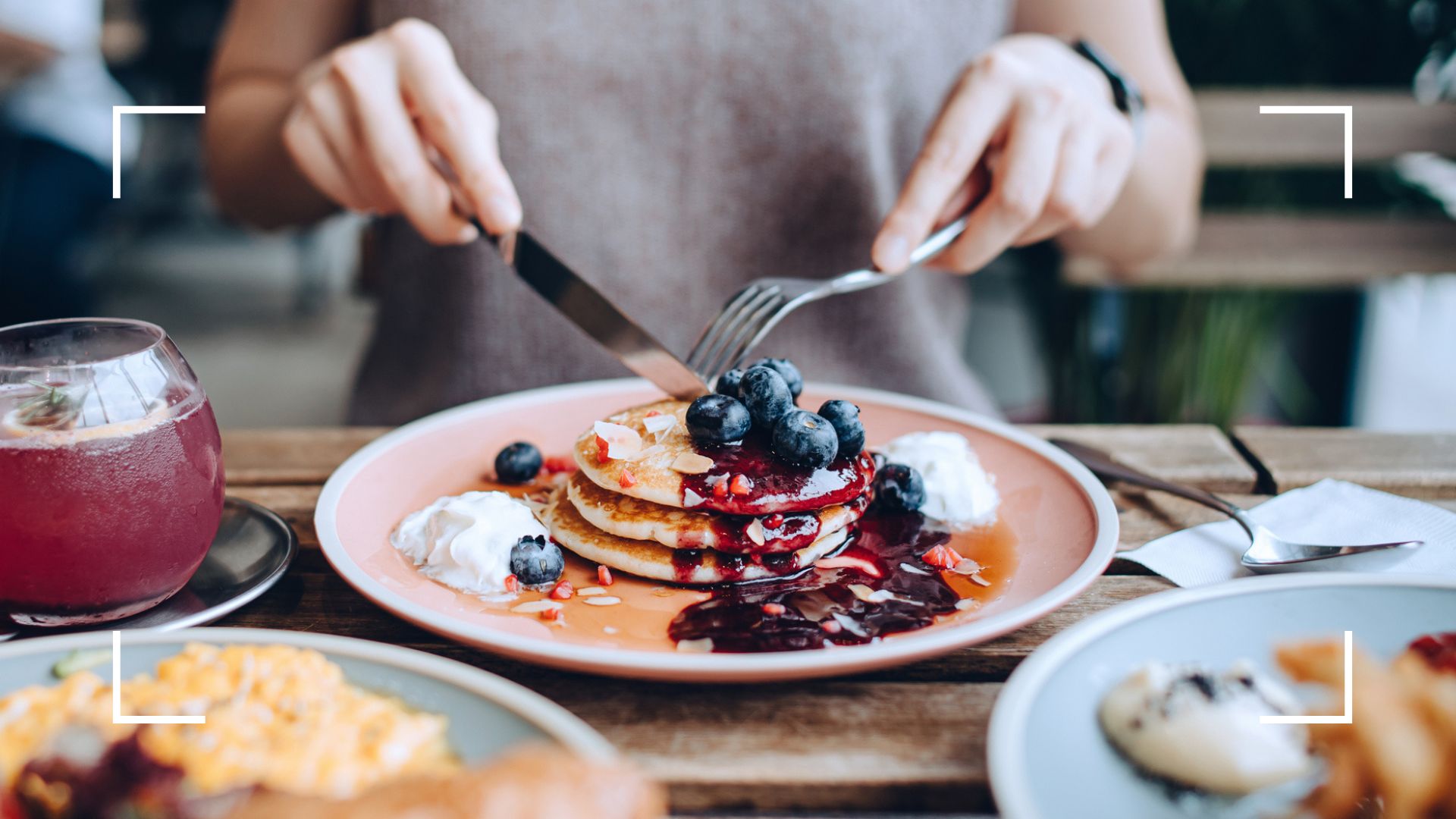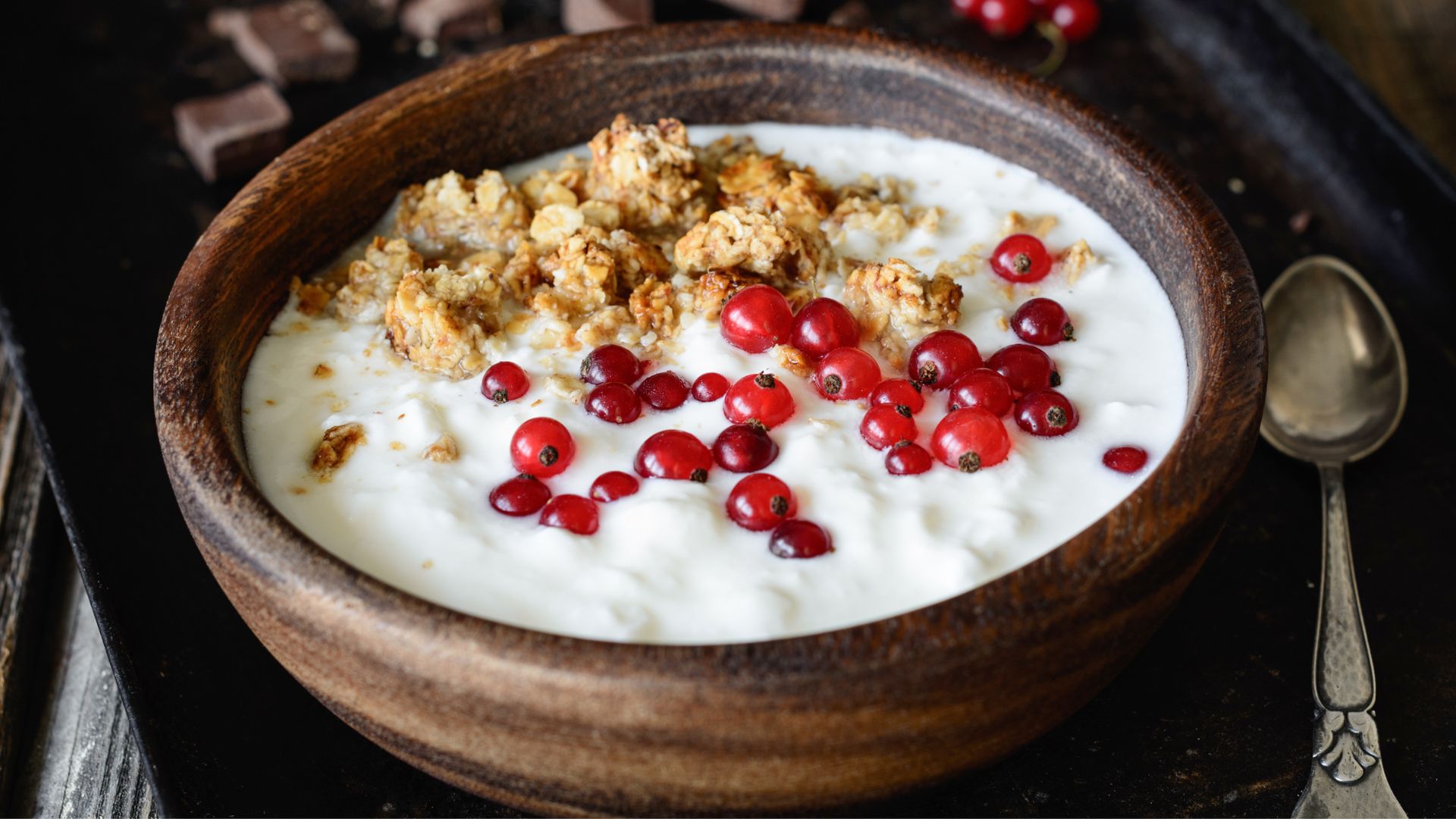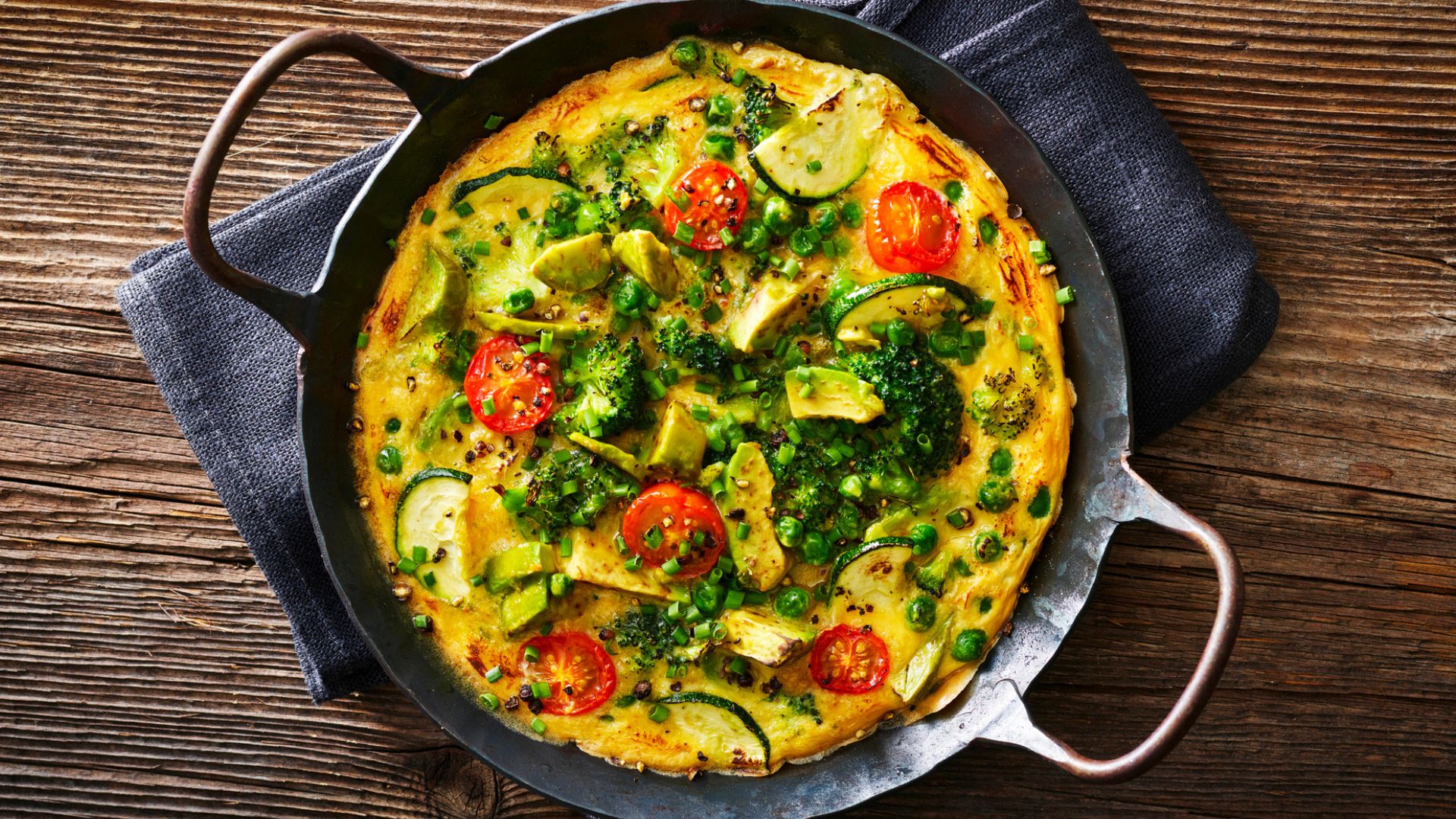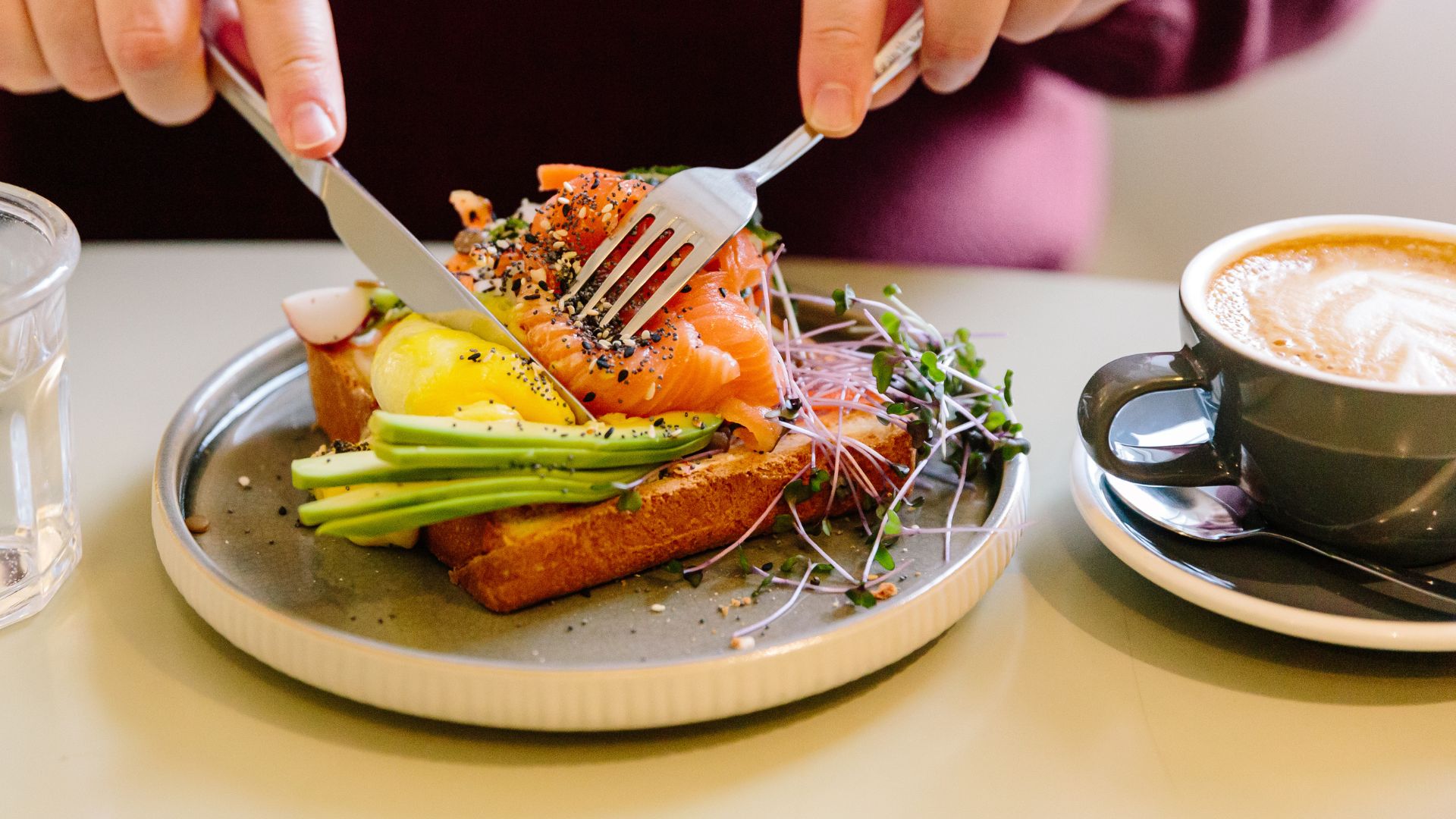
In the mornings, most of us thrive on solid breakfast to see us through to lunch so healthy brunch is the best of both worlds. Think alternative ways to make pancakes, avocado and eggs on toast, porridge, and so much more.
If you are looking for healthy brunch recipes, you may also be looking for ways to lose weight healthily. Brunch is more than just a meal. We tend to eat it with friends and family over a few hours and normally at the weekend, so it's important to be able to relax at these occasions and recognize the role that food plays in our social wellbeing as well as our physical.
But it's understandable that you may still want to make the 'healthiest' choice. When we say 'healthy brunch', we mean options packed full of delicious fruits and vegetables, high in protein, fiber, healthy fats, and complex carbohydrates. Some of these ideas, as suggested by nutritionists and fitness experts, are also conveniently low in calories - in case you were wondering how many calories to eat for breakfast. Even the highest stack of bacon and maple syrup pancakes in moderation can slot into a healthy diet though, so keep in mind what you actually want to eat as well.
Whatever your goals and plans for the weekend, we've got you covered with a selection of ideas loaded with the best high-protein low-calorie foods and tips from the experts on how to choose healthy options when you're eating out.
Healthy brunch ideas
1. Low-fat Greek yogurt with berries
Greek yogurt is a brunch staple - often served alongside pancakes or part of an acai bowl - but you can have it on its own. "Layer low-fat Greek yogurt with fresh berries, a sprinkle of granola, and a drizzle of honey," suggests Arabella Featherstone, a leading fitness trainer and coach. "This provides a protein-rich and satisfying brunch option."
Alternatively, nutritionist Eli Brecher suggests "blueberries, raspberries, or strawberries with a sprinkle of pumpkin seeds."
It's one of the best healthy brunch ideas, Brecher explains, because it naturally has a lower proportion of fats. "This is the most calorie-dense macronutrient," she says. "Although we do need healthy fats [which includes yogurt] in moderation for a balanced diet."

2. Avocado on toast with poached eggs
This brunch classic makes the list, for sure. "Top wholegrain toast with smashed avocado, lemon juice, salt, and pepper," says Featherstone. "Add poached eggs for extra protein and flavor."
While avocado is actually higher in calories than many people think, with about 240 per medium avocado, it's full of those healthy fats we need. According to research linked to the Harvard School of Public Health, healthy fats (much like protein) help us stay full through the day, work to reduce inflammation, and help with blood sugar control.
Otherwise, avocado toast with eggs is a relatively low-calorie option. "Selecting lower calorie meal options will often mean more fruit and vegetables and less refined sugars, carbohydrates and oils," says Brecher.
3. Chia pudding
Need an on-the-go brunch option? Try chia pudding.
"Make chia pudding by soaking chia seeds in half a cup of milk overnight," says Brecher. "Then top it off with sliced kiwi and a spoon of peanut butter."
4. Mushroom and spinach omelette
Vegetable omelettes are super easy to pull together, even with minimal ingredients, and can be all you need for a healthy brunch spread. "Fill an omelette with sautéed vegetables like spinach, bell peppers, mushrooms, and onions," Featherstone suggests.
But don't make one of the biggest weight loss mistakes out there: only using the egg white. "Often people assume an egg-white omelette is healthier but I recommend using the whole eggs as most of the nutrients are in the yolk," says Brecher. "Serve with one slice of wholemeal or seeded toast."

5. Porridge
Another excellent breakfast staple designed for eating either on-the-go or at home, porridge is high in complex carbohydrates and protein thanks to the oats and its accompaniments.
"Make your porridge with oats, water, a large pinch of cinnamon, and a scoop of the best protein powder, topped with chia seeds and a large handful of blueberries," says the nutritionist.
6. Protein pancakes
When it comes to making brunch at home, the many benefits of protein powder shouldn't be undervalued. If you're working out regularly, you'll need plenty of protein to grow and sustain muscle, plus according to Jeju National University Hospital, more protein means we stay fuller for longer.
To make protein pancakes, simply combine one banana with oats, 2 eggs, milk, baking powder, a scoop of protein powder, and use light cooking spray or coconut oil to fry. Serve with berries or extra banana and peanut butter on the side.

7. Salmon and eggs
Of all the animal protein sources to choose from (there are, of course, plenty of vegan protein alternatives), salmon is nutritionally one of the best. Being high in omega-3 fatty acids, protein, B vitamins, and potassium, it's an ideal accompaniment for healthy brunch at home or at the restaurant.
When you combine your salmon and eggs with a little spinach, broccoli, or some other fiberous greens, you'll also have ticked all boxes for better gut health, says Brecher. "Eating a diet rich in fiber-rich plant-based foods helps to support the diversity of our gut microbiome. This is the collection of trillions of bacteria that live in our gut and support our health. A healthy gut microbiome can help support weight management alongside a calorie-controlled diet and regular exercise."
How to order healthy brunch at a restaurant
If you're out at a restaurant and want the healthiest brunch option on the menu, Featherstone suggests you do some digging while you read. "Scan for keywords like grilled, baked, steamed, or roasted as they tend to be lower in calories compared to fried or creamy options," she says.
Brecher suggests keeping it simple too. "Picking a protein such as smoked salmon or poached eggs and loading it up with veggies on the side will be a lot lower in calories than brunch options like pancakes, waffles, or french toast," she says. "In addition, opting for a savory breakfast over something sweet can help keep your blood sugar levels stable and reduce any large spikes and crashes."
Here are some more tips from nutritionist Eli Brecher and fitness expert Arabella Featherstone on ordering healthy brunch when you're out and about:
- Plan ahead: "Look for restaurants that offer healthier options and don’t feel ashamed to say that you’re trying to eat better or healthier," says Featherstone. "Before you go, have a look at the menu online and decide on what you're going to order and what the most-healthy options are. Going in knowing what you are you going to order will mean it's less likely you'll act on impulse and splurge."
- Keep it simple: Go for the simple lean proteins on the menu like salmon, chicken, eggs, and soy-based protein products like tofu.
- Avoid fried food: "While a Full English may seem appealing, fried food is typically higher in calories due to the oil, so skip the hash browns," says Brecher.
- Be mindful of oily dressings: "Choosing a salad may seem like a healthy option, and it often is unless loaded up with cheese or anything deep fried, but opt for the dressing on the side. This way you can control how much you’re adding. Alternatively, ask for a simple squeeze of lemon juice and a drizzle of balsamic vinegar is a great low calorie dressing option to swap it out for," the nutritionist adds.
As noted though, going out to eat is more than just a fuelling stop. Brunch is all about catching up with friends and family, enjoying good food, coffee, and maybe even a couple of drinks. So much like trying to only eat healthy chocolate on the holidays, focusing too much on the calories and nutritional make-up of the food at brunch may take away some of the joy of the occasion - and there's no need. You can always prioritize the macronutrients you're focusing on, whether that be protein or fiber, in other meals during the day.
Calories-wise, it's highly unlikely that brunch - provided you make sustainable choices for other meals and on other days - will be the reason you're not losing weight in a calorie deficit.
Plus, even when there are calories on menus, trying to track calories and macronutrient information when you're at a restaurant is almost a futile effort. There are so many variations in how food can be cooked, so you might as well just enjoy yourself. As Featherstone explains, "Restaurants may not provide detailed nutrition information, portion sizes can vary, and ingredients or cooking methods may be unknown. Sauces, dressings, and hidden added fats can significantly impact calorie intake."







